Welcome to our blog on Precision Farming Technologies for Weed Management, an exciting journey into the future of agriculture. Here, we delve into innovative technologies that revolutionize weed control, making it more efficient and sustainable. From GPS-guided equipment to AI-driven solutions, this blog unravels how precision farming is transforming the way we tackle weeds, ensuring healthier crops and higher yields. Join us as we explore these cutting-edge tools designed to enhance farm productivity while protecting our environment.
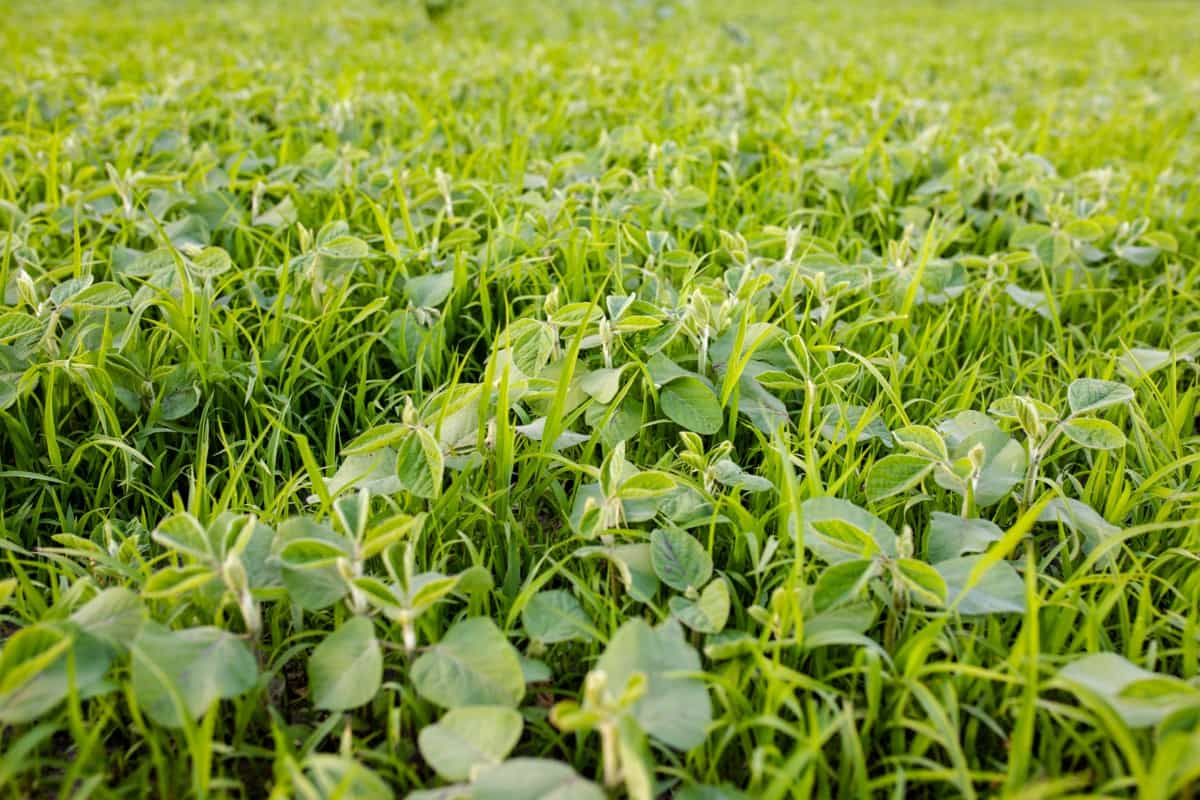
Precision Farming Technologies for Weed Management
Introduction to Precision Farming
Precision farming is a modern approach to farming that uses advanced technologies to optimize crop production and reduce environmental impacts. Precision farming involves collecting and analyzing data on soil, weather, crops, pests, weeds, and other factors that affect crop growth and yield. Based on this data, farmers can make informed decisions on when, where, and how much to apply inputs such as seeds, fertilizers, pesticides, and water.
Precision farming can also help farmers monitor and control crop quality and harvest timing. One of the main challenges that precision farming can address is weed management. Weeds unwanted plants that compete with crops for resources such as light, water, nutrients, and space. Weeds can reduce crop yield and quality, increase production costs, and pose health and environmental risks.
Role of Precision Farming in Weed Management
Precision weed management is the application of precision farming techniques to identify and control weeds in a site-specific manner. Precision weed management aims to reduce the use of herbicides and other weed control methods that can have negative impact on human health, biodiversity, soil quality, water resources, and climate change.
Precision weed management also seeks to improve crop yield and quality by targeting the most harmful weeds and minimizing crop damage. Precision weed management involves four main steps: weed detection, weed identification, weed mapping, and weed control. Weed detection is the process of locating weeds within a field using sensors such as cameras, lasers, radar, or drones.
Weed identification is the process of classifying weeds into different species or groups based on their morphology, physiology, or genetics. Weed mapping is the process of creating spatial representations of weed distribution and density within a field using geographic information systems (GIS) or global positioning systems (GPS). Weed control is the process of applying site-specific treatments to weeds using variable-rate applicators or robotic systems.
Global Impact of Weeds on Agriculture
Weeds are one of the major threats to global food security and agricultural sustainability. According to a study by Oerke (2006), weeds cause an average yield loss of 34% across all crops worldwide. This translates into an annual economic loss of about 220 billion USD. Moreover, weeds can reduce crop quality by contaminating harvests with toxic substances or allergens, affecting human and animal health.
In case you missed it: Weed Management in Onion Farms: Control with Organic, Mechanical, Biological, and Herbicides
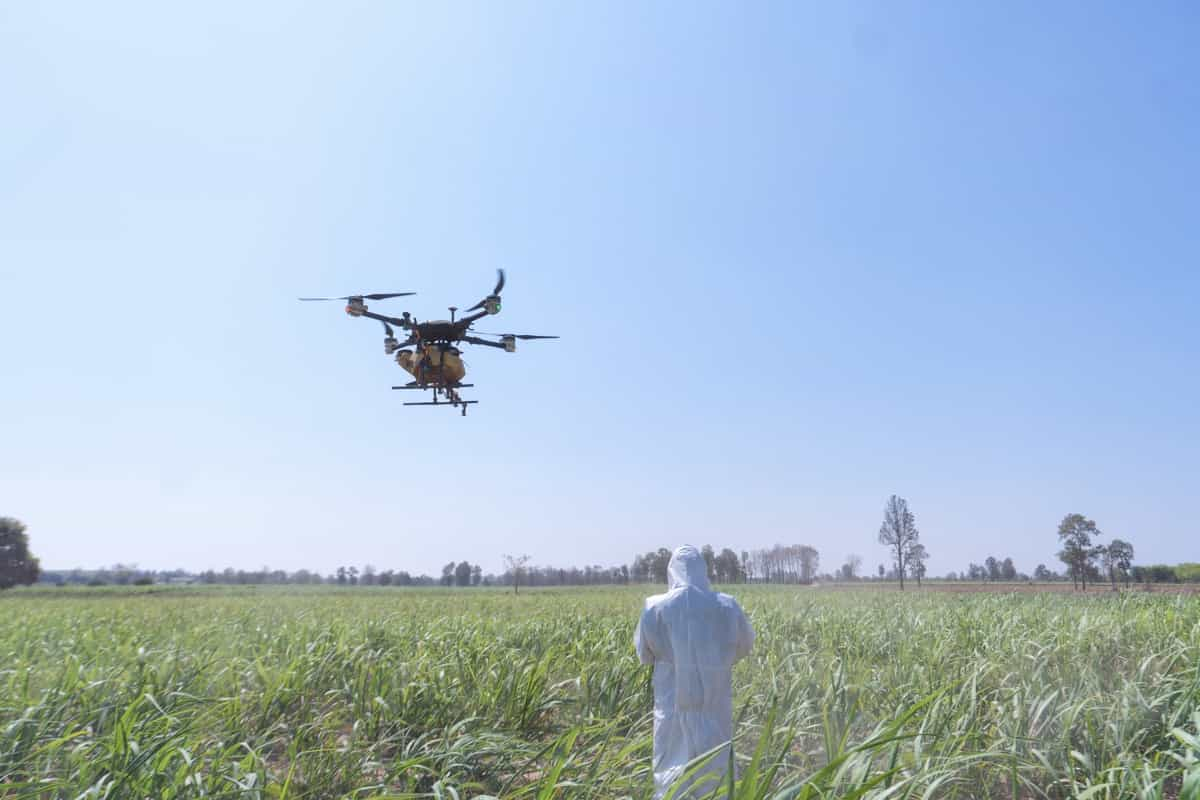
Weeds can also have ecological impacts by reducing biodiversity, altering ecosystem functions, and facilitating the spread of invasive species. For example, weeds can compete with native plants for resources, reduce habitat availability for wildlife, increase soil erosion, alter nutrient cycles, affect water availability and quality, and increase fire risk.
The Impact of Weeds on Agriculture
Weeds significantly reduce crop yields due to competition for resources and their role as hosts for pests and diseases. Modern agricultural practices, alongside ecological changes and climate change, have led to more frequent and varied weed infestations, necessitating innovative weed management strategies.
Technological Innovations in Precision Weed Management
Remote Sensing and Hyper-Spectral/Multi-Spectral Imagery: Technologies like hyper-spectral and multi-spectral imagery enable accurate weed detection and differentiation from crops, allowing for more precise herbicide application. Studies have shown effectiveness in differentiating crops from weeds with accuracy rates ranging from 80% to 96% in various settings.
Uncrewed Aerial Vehicles (UAVs): UAVs are being increasingly used for mapping weeds and site-specific herbicide applications. They offer high precision in weed mapping and can drastically reduce unnecessary herbicide applications.
Robotic Technology: Computer vision and robotic technology have shown promising results in identifying and differentiating between crops and weeds. Robots equipped with vision systems can achieve high accuracy in weed recognition and targeted herbicide application.
Site-Specific Applications and Patch Spraying
- Reduced Herbicide Use: Studies have reported significant reductions in herbicide usage, ranging from 15.6% to 100%, depending on the specific application and herbicide used. This reduction is crucial in minimizing environmental impact and addressing herbicide resistance.
- Increased Crop Yield: Site-specific weed management has shown potential in increasing crop yields compared to traditional blanket spraying methods. This increase is attributed to more efficient weed control and reduced crop damage from herbicides.
- Enhanced Weed Control Efficacy: Precision technologies like motorized finger weeders and robotic systems have demonstrated high efficacy in weed control, significantly reducing weed populations in various crop settings.
In case you missed it: Maximizing Health and Productivity with Precision Nutrition Strategies for Poultry Farming
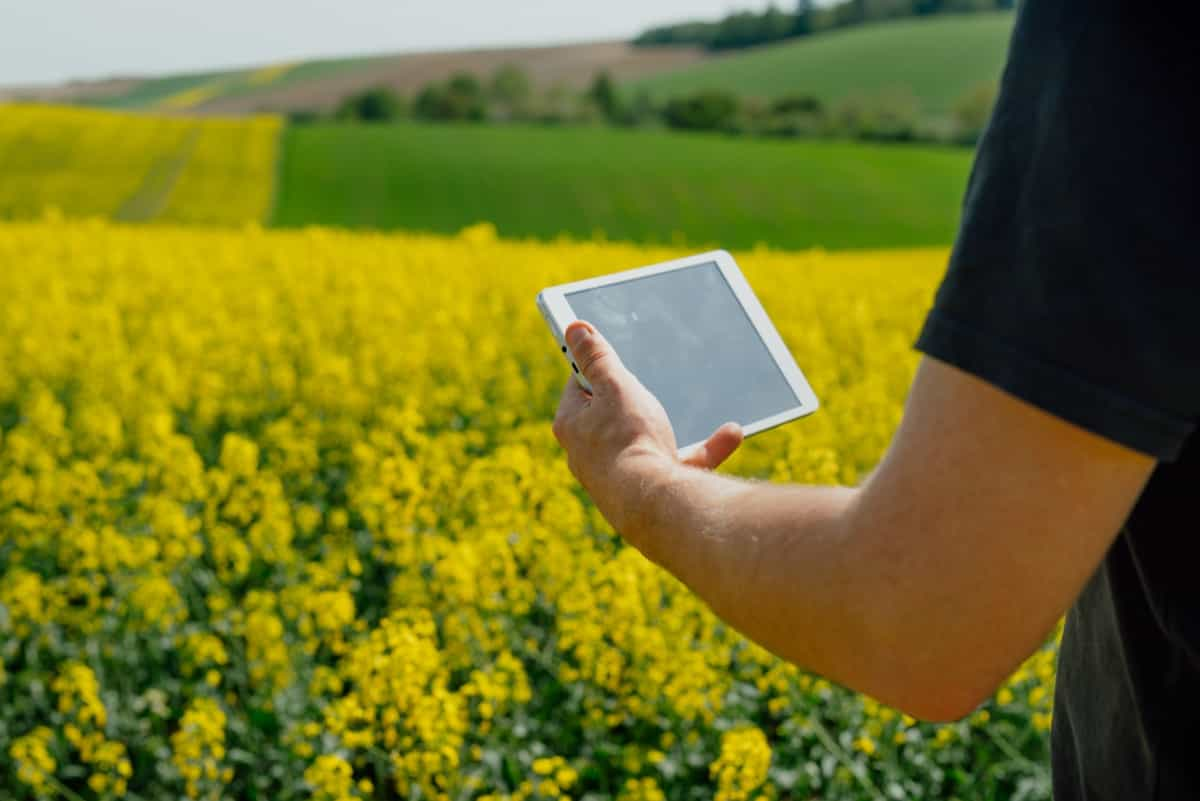
Economic and Environmental Implications
- Cost Savings: The targeted approach in precision agriculture leads to considerable cost savings due to reduced herbicide usage and improved efficiency in weed control.
- Environmental Protection: By minimizing herbicide use and targeting specific weed populations, precision farming contributes to environmental protection and sustainable agricultural practices.
- Agro-Ecosystem Benefits: Precision weed management enhances the overall health of the agro-ecosystem by reducing chemical inputs and promoting biodiversity.
Challenges in Weed Management
Weeds unwanted plants that compete with crops for resources, reduce yield and quality, and interfere with harvesting and processing. Weed management is the practice of preventing or reducing weed infestation and its impact on crop production. Weed management is challenging because weeds are diverse, adaptable, and resilient. They can evolve resistance to herbicides, survive harsh conditions, and spread rapidly.
Moreover, weed management is influenced by many factors, such as crop type, soil type, climate, cropping system, and socio-economic conditions. Therefore, weed management requires a holistic and integrated approach that considers the biology and ecology of weeds and crops, as well as the environmental and economic impacts of weed control methods.
Mechanized Weed Control Technologies
Mechanized weed control technologies are methods that use machines or tools to remove or suppress weeds physically. These methods include tillage, mowing, flaming, mulching, and robotic weeding. Mechanized weed control technologies have several advantages over chemical weed control methods, such as reducing herbicide use and resistance, improving soil health and biodiversity, and saving labor and cost.
However, mechanized weed control technologies also have some limitations, such as being less selective, requiring more energy and maintenance, and causing soil erosion and compaction. Therefore, mechanized weed control technologies should be used in combination with other weed control methods to optimize weed management outcomes.
Remote Sensing and GIS Applications in Weed Management
Remote sensing and GIS (geographic information systems) are technologies that collect, process, analyze, and display spatial data on weeds and crops. Remote sensing uses sensors mounted on satellites, aircraft, drones, or ground vehicles to capture images or signals of the Earth’s surface. GIS uses software to store, manipulate, and visualize the data collected by remote sensing or other sources.
In case you missed it: A Guide to Understand Importance of Drones in Agriculture/Farming: Advantages, Applications, and Different Types
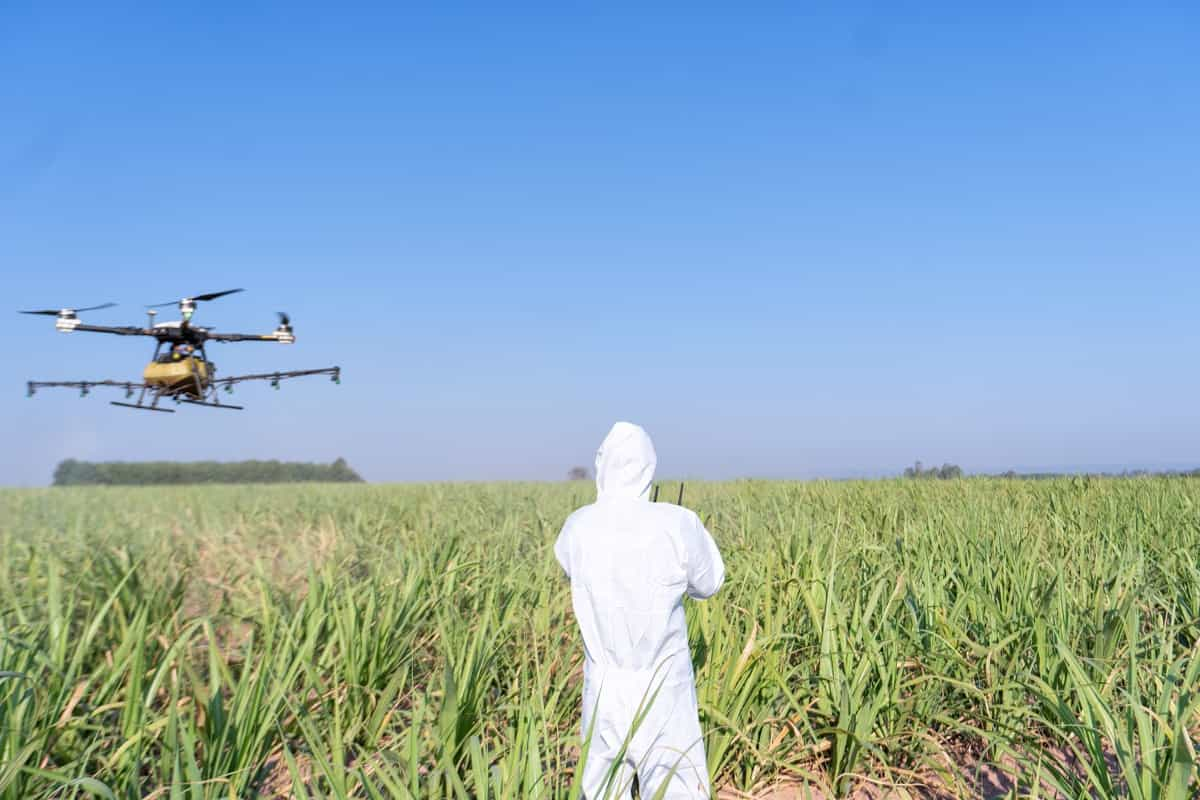
Remote sensing and GIS applications in weed management include weed mapping, identification, monitoring, modeling, and decision support. These applications can help weed managers assess weed distribution and abundance, detect new invasions or outbreaks, evaluate weed control efficacy and impact, and plan site-specific weed management strategies.
Precision Herbicide Application Techniques
Precision herbicide application techniques are methods that apply herbicides selectively and accurately to weeds or crop rows. These methods use sensors, actuators, computers, and GPS (global positioning system) to detect weeds or crops and control the spray nozzles or booms of the herbicide applicators.
Precision herbicide application techniques can reduce herbicide use and cost, minimize environmental pollution and human health risks, enhance crop safety and yield, and delay herbicide resistance development. Some examples of precision herbicide application techniques are spot spraying, band spraying, shielded spraying, variable rate spraying, and intelligent spraying.
Use of Drones in Weed Detection and Management
Drones are uncrewed aerial vehicles that can fly autonomously or remotely controlled by operators. Drones can be instrument equipped with cameras or other sensors to capture high-resolution images or data of weeds and crops. Drones can also be fitted with sprayers or other devices to apply herbicides or other treatments to weeds or crops.
The use of drones in weed detection and management can offer several benefits over conventional methods, such as increasing efficiency and accuracy, covering large areas quickly and easily, accessing difficult terrains or locations, reducing labor and risk exposure, and providing real-time feedback and information. However, the use of drones in weed detection and management also faces some challenges, such as legal regulations, technical limitations, data processing and analysis requirements, and ethical concerns.
Automated Robotic Systems for Weed Control
Weeds pose a significant cause threat to crop production and food security, reducing yield and quality and harboring pests and diseases. Automated robotic systems offer a promising solution for weed control, reducing human inputs, increasing efficiency, and minimizing environmental impacts. These systems use sensors, actuators, and algorithms to detect and eliminate weeds through mechanical, flame, or herbicidal spray methods. Examples of commercial robotic weeding machines include:
- The Oz weeder and Dino robot by Naïo Technologies.
- EcoRobotix’s solar-powered robot uses artificial intelligence and computer vision.
- Vision Weeding Technologies’ vision-based robot.
- These systems use sensors, actuators, and algorithms to detect and eliminate weeds, reducing human inputs and minimizing environmental impacts.
Data-Driven Decision-Making in Weed Management
Data-driven decision-making involves collecting and analyzing large amounts of data to make informed decisions. In weed management, this process can help farmers optimize their control strategies, reduce costs and risks, and improve crop productivity and quality. Data sources for weed management include remote sensing, on-ground sensors, and historical data.
In case you missed it: Weed Management in Tea Crop: Common Weeds of Tea Plants and Herbicides Safe for Use on Tea Plants
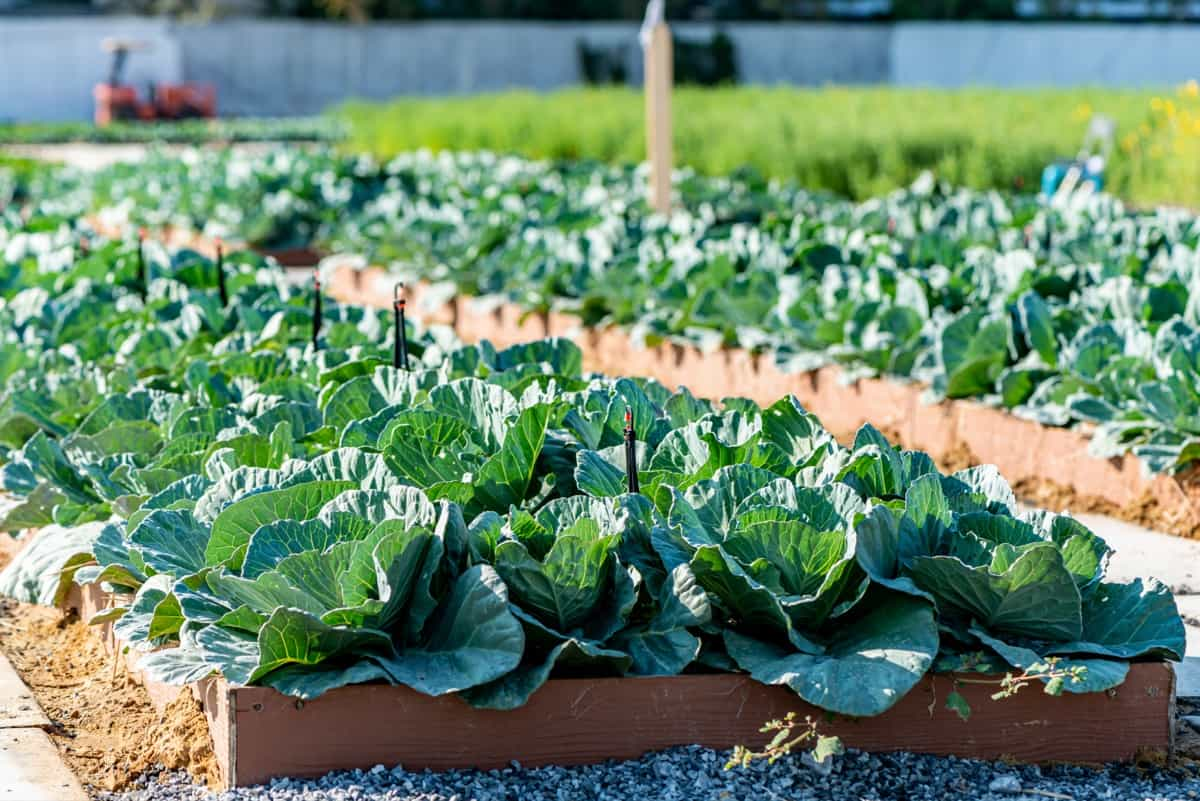
Remote sensing captures images and information about field conditions, while on-ground sensors measure parameters related to weed growth and crop performance. Historical data provides valuable information for planning and evaluation. Data analysis techniques for weed management include machine learning, like using algorithms to make predictions or classifications without explicit rules.
Artificial intelligence, which uses systems to perform tasks that require human intelligence, can optimize weed control strategies based on multiple factors and constraints. Big data analytics, which uses advanced tools and methods to process and analyze large and complex data sets, can discover patterns and trends in weed dynamics or evaluate the impacts of weed management interventions. Overall, data-driven decision-making can significantly improve weed management practices and yields.
Integration of AI and Machine Learning in Weed Control
AI and machine learning have significantly impacted weed control by providing new tools for weed detection and elimination. These technologies enable weed control systems to adapt to changing conditions, learn from data or experience, and innovate. For instance, AI can help robots calibrate sensors or modify their speed or direction based on field conditions. Machine learning can also help improve performance over time by updating models or algorithms based on new data or outcomes.
Moreover, AI can generate novel solutions or approaches that may not be obvious or feasible for humans, such as using unconventional methods like laser weeding or biocontrol agents. Laserweeding, a technique using AI-powered laser beams to target and kill weeds without harming crops or soil, uses computer vision software and deep learning models to differentiate crops from weeds based on their shape, color, and texture.
Future of Precision Weed Management
The future of precision weed management is promising, with ongoing research and development in sensor-based technologies, UAVs, and robotic systems. These advancements hold the potential to revolutionize weed management in agriculture, making it more sustainable, cost-effective, and environmentally friendly.
In case you missed it: Top 12 Best Herbicides in India: Guide to Buy Cheap Weed Killing Herbicides at Best Price
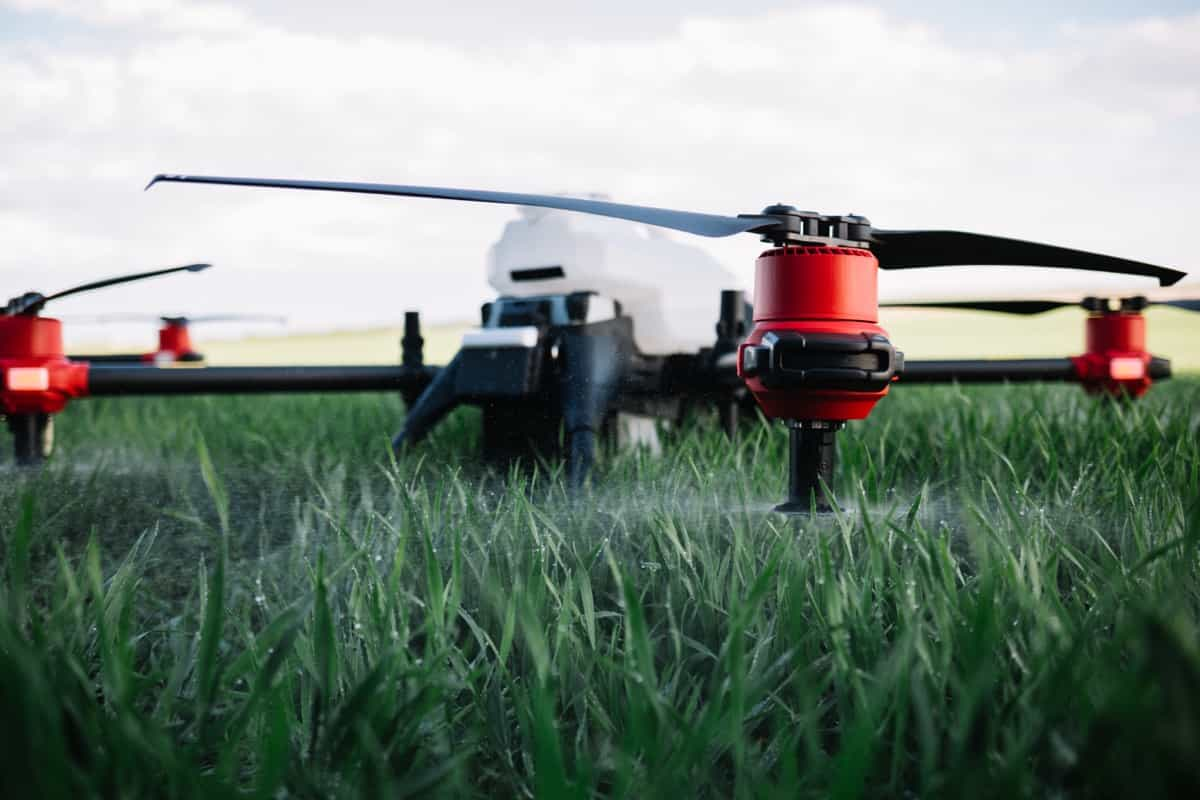
Conclusion
Precision farming technologies revolutionize weed management by combining targeted, efficient control with environmental sustainability. Advanced tools like drones, hyper-spectral imaging, and robotics reduce herbicide use and soil disturbance, enhancing crop health and yield. This smart approach marks a significant step towards eco-friendly, high-yield agriculture.
- Types of Pesticides Used in Agriculture: A Beginner’s Guide
- Economical Aquaculture: A Guide to Low-Budget Fish Farming
- 15 Common Planting Errors That Can Doom Your Fruit Trees
- How to Make Houseplants Bushy: Effective Tips and Ideas
- Innovative Strategies for Boosting Coconut Pollination and Yield
- Pollination Strategies for Maximum Pumpkin Yield
- The Complete Guide to Chicken Fattening: Strategies for Maximum Growth
- Natural Solutions for Tulip Problems: 100% Effective Remedies for Leaf and Bulb-Related Issues
- Revolutionizing Citrus Preservation: Towards a Healthier, Greener Future
- Natural Solutions for Peony Leaf and Flower Problems: 100% Effective Remedies
- Maximizing Profits with Avocado Contract Farming in India: A Comprehensive Guide
- Natural Solutions for Hydrangea Problems: 100% Effective Remedies for Leaf and Flowers
- The Ultimate Guide to Choosing the Perfect Foliage Friend: Bringing Life Indoors
- From Sunlight to Sustainability: 15 Ways to Use Solar Technology in Agriculture
- The Ultimate Guide to Dong Tao Chicken: Exploring from History to Raising
- The Eco-Friendly Makeover: How to Convert Your Unused Swimming Pool into a Fish Pond
- Mastering the Art of Delaware Chicken Farming: Essentials for Healthy Backyard Flocks
- 20 Best Homemade Fertilizers for Money Plant: DIY Recipes and Application Methods
- How to Craft a Comprehensive Free-Range Chicken Farming Business Plan
- Brighten Your Flock: Raising Easter Egger Chickens for Beauty and Bounty
- How to Optimize Your Poultry Egg Farm Business Plan with These Strategies
- Subsidy for Spirulina Cultivation: How Indian Government Schemes Encouraging Spirulina Farmers
- Ultimate Guide to Raising Dominique Chickens: Breeding, Feeding, Egg-Production, and Care
- Mastering the Art of Raising Jersey Giant Chickens: Care, Feeding, and More
- Ultimate Guide to Raising Legbar Chickens: Breeding, Farming Practices, Diet, Egg-Production
- How to Raise Welsummer Chickens: A Comprehensive Guide for Beginners
- How to Protect Indoor Plants in Winter: A Comprehensive Guide
- Ultimate Guide to Grow Bag Gardening: Tips, Tricks, and Planting Ideas for Urban Gardeners
- Guide to Lotus Cultivation: How to Propagate, Plant, Grow, Care, Cost, and Profit
- Agriculture Drone Subsidy Scheme: Government Kisan Subsidy, License, and How to Apply Online
- Ultimate Guide to Raising Araucana Chickens: Breed Profile, Farming Economics, Diet, and Care
- Bringing Hydroponics to Classroom: Importance, Benefits of Learning for School Students
- Ultimate Guide to Raising Polish Chickens: Breed Profile, Farming Economics, Diet, and Care
- Ultimate Guide to Raising Australorp Chickens: Profile, Farming Economics, Egg Production, Diet, and Care
- Silkie Chicken Farming: Raising Practices, Varieties, Egg Production, Diet, and Care
- Sussex Chicken Farming: Raising Practices, Varieties, Egg Production, Diet and Care